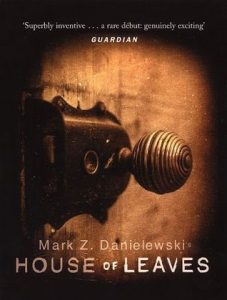
What is Postmodernist literature? What is Postmodernism? What is literature? These are the kinds of questions that you will ask yourself after picking up a copy of House of Leaves. Even before you read the thing, Mark Z. Danielewski’s wild, hypnotic, dizzying, panoramic, terrifying, beautiful work of literature is something that will make you question the answers to questions you always thought you had answers for. It is a strange book – alive with menace, evil, goodness, wrath, beauty, and pain. Believe me when I say that you have never come across anything like it before and you will probably never come across anything like it after.
While Postmodernist plays and films might, for whatever reason, be more popular in Guyana among those who are cognizant of artistic trends and forms, Postmodernist literature still struggles to find a firm footing. Indeed, there are only so many works in local literature that can truly be considered postmodernist. If, however, the young and upcoming writer is interested in this field of writing then it is essential that such a writer reads House of Leaves which, with its fragmented narrative, its use of multiple (and sometimes unreliable) narrators, its constant shifting away from one narrative focus to the next, the ways in which the characters and stories intertwine and intersect with each other, the use of colours in the text, and the utter disregard (or careful, deliberate dismantling) of the structure of the typical novel form, highlights various postmodernist elements that contributed to the book’s success and its securing of a place within the canon of contemporary postmodernist literature as an iconic novel with a strong cult following.
While much has been written about the various postmodernist, experimental elements of the novel, there is an aspect of House of Leaves that deserves as much attention: the plot. Confusing and disorienting as it is, the work offers, at its core, a story that is as entertaining as it is entertaining to extract. Mr. Truant, a young man who works in a tattoo parlour, comes across a manuscript written by the mysterious Mr. Zampano which focuses on a movie called The Navidson Record. As Truant reads Zampano’s work, the effect of a “story within the story” is created, which then becomes more complicated with the addition of a myriad of footnotes and other voices and narrators, giving us “several stories within the story within the story.” It is complicated, but not impossible to follow.
Truant is a character who, in the initial portions of his own story, appears to be an individual who has a life you think you know – someone who is readable and open. However, as the novel progresses, Truant, like the book itself, transforms and develops into a multifaceted thing – and this transformation is one of the best things about House of Leaves.
The Navidsons (the family at the centre of the documentary film that Zampano writes about) is also interesting in the way that in the middle of a contemporary, cutting edge psychological thriller/horror novel, Danielewski manages to use the family and their friends to evoke age-old themes like love, death, the unknown, relationships and family itself.
However, without such elements, House of Leaves would be a hard, dense, emotionless thing. By putting a real family in danger, by focusing on their flaws and struggles, the author humanizes the book, which ensures that despite the many types of oddness it displays, the readers are never truly alienated from it because of our interest in the lives, in the story, of these charatcers.
Good horror novels are rare and House of Leaves falls into the small category of books that are uniquely and powerfully terrifying. The author plays on many human fears (monsters, claustrophobia, darkness, etc.) and uses them dramatically and exhilaratingly. Unlike films, which can present the audience with a visual object of fear, the book allows readers to summon their own fears, based on the little that is given. The descriptions, for example, of the never-ending maze within the house, with its lack of light, many rooms and the growling, snarling sounds that echo within it are examples of the elements that Danielewski plays with in order to impart fear.
House is Leaves is strange. Which other book can you find with upside-down text, blank pages, strange images, poetry, letters, and coloured writing all wrapped up into one? Read it for its strangeness, if not for all the other things it has going for it.



.jpg)








